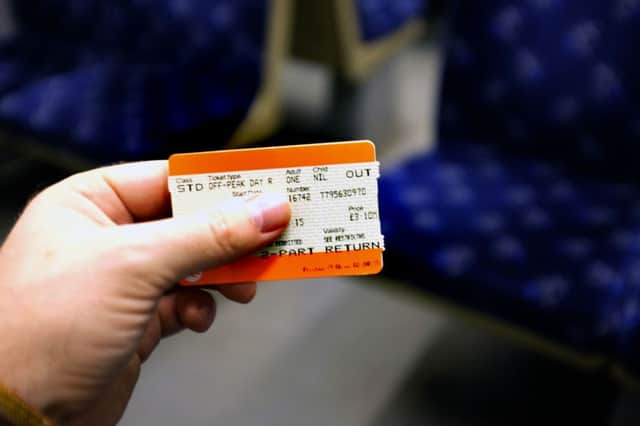Alastair Dalton: Real loser in ScotRail dispute is passengers


There’s a major power struggle going on behind the ScotRail dispute – with far wider implications than just who controls train doors.
The industrial muscle of Britain’s largest rail union is at stake in this contest, because if it loses, it will effectively no longer be able to bring services to a halt by calling train staff out on strike.
Advertisement
Hide AdAdvertisement
Hide AdThe Rail, Maritime and Transport union (RMT) wants to retain conductors, or guards, on ScotRail trains, even though half of them haven’t had conductors for 30 years.
The significance is that conductors are “safety critical” – without them, trains can’t run. No wonder the union was incensed at a ScotRail memo – which The Scotsman highlighted on Wednesday – that said removing conductors would mean “fewer cancellations and greater resilience to industrial action”.
Conductors open and close doors, as well as check tickets, on diesel trains, which operate on virtually all ScotRail routes outside Strathclyde, from commuter lines into Edinburgh to longer-distance services.
But in and around Glasgow, where electric trains predominate, their doors are operated by drivers, who check they are clear to be closed from their cabs by using CCTV and platform monitor screens.
The Office of Rail, which regulates safety, has said this is a “safe method of working” so long as there is “suitable equipment, proper procedures and competent staff in place”.
In addition, research in 2009 for the Rail Safety and Standards Board, which is responsible for reducing risks to passengers, concluded there was “very little difference in risk” between drivers and conductors/guards controlling doors.
So while the RMT claims the ScotRail dispute is about safety, the official evidence – and decades of practice – appears to be against it.
Added to that is the limited impact of the two strikes so far, on Tuesday and yesterday, with only one in four passengers affected.
Advertisement
Hide AdAdvertisement
Hide AdScotRail has also said it will be able to run more trains if the strikes continue – there are more planned for tomorrow and for the next four Sundays. This is because the company is training more managers to work as conductors, as well as drafting in more staff from English train operators also run by Dutch firm Abellio.
Public sympathy for the RMT may be limited among passengers who are both caught in the current disruption and faced with a threat to the introduction next year of a fleet of new trains which triggered the dispute.
Carriages on many Central Belt lines are bursting at the seams, and, for the hard-pressed commuter, new ones cannot come soon enough.
ScotRail says it has no plans for drivers to take over door control from conductors on any more trains other than these ones. However, if it wins the dispute, this scenario is likely to happen, sooner or later.
After all, the same type of electric train operates on both the Edinburgh-North Berwick and Glasgow-Ayr lines, but conductors control the doors on the former and drivers on the latter.
ScotRail said drivers get the doors closed more quickly, reducing delays, while having lower-paid ticket examiners to check fares on board would save money.
The cards appear to be stacked against the union, but there is no end to this dispute in sight. That’s bad for both sides – and passengers.